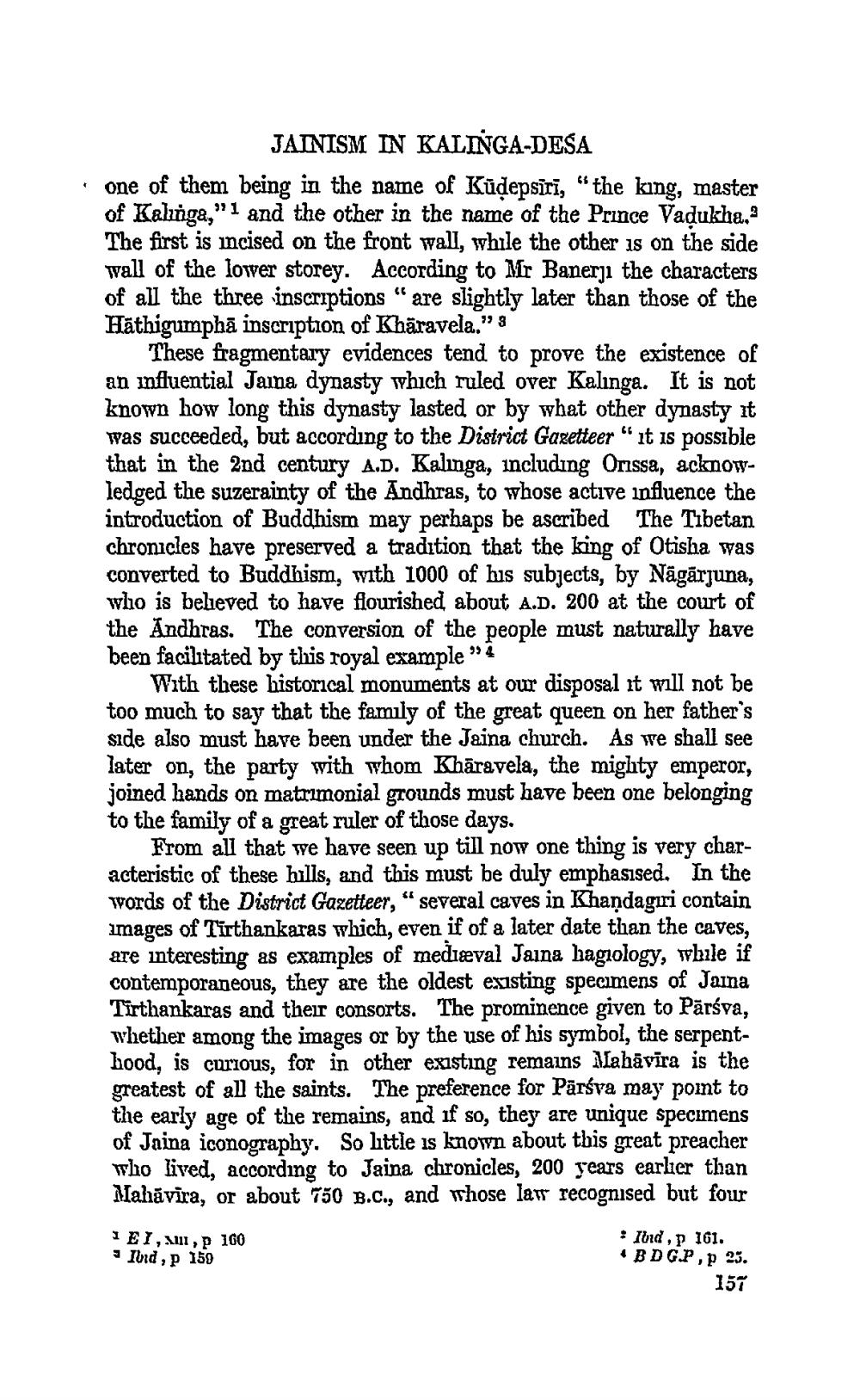________________ JAINISM IN KALINGA-DESA * one of them being in the name of Kudepsiti, " the king, master of Kahnga,"1 and the other in the name of the Prince Vadukha.? The first is incised on the front wall, while the other is on the side wall of the lower storey. According to Mr Banerji the characters of all the three inscriptions "are slightly later than those of the Hathigumpha inscription of Kharavela." These fragmentary evidences tend to prove the existence of an influential Jama dynasty which ruled over Kalinga. It is not known how long this dynasty lasted or by what other dynasty it was succeeded, but according to the District Gazetteer " it is possible that in the 2nd century A.D. Kalmga, including Orissa, acknowledged the suzerainty of the Andhras, to whose active influence the introduction of Buddhism may perhaps be ascribed The Tibetan chronicles have preserved a tradition that the king of Otisha was converted to Buddhism, with 1000 of his subjects, by Nagarjuna, who is believed to have flourished about A.D. 200 at the court of the Andhras. The conversion of the people must naturally have been faciltated by this royal example" 4 With these historical monuments at our disposal it will not be too much to say that the family of the great queen on her father's side also must have been under the Jaina church. As we shall see later on, the party with whom Kharavela, the mighty emperor, joined hands on matrimonial grounds must have been one belonging to the family of a great ruler of those days. From all that we have seen up till now one thing is very characteristic of these bills, and this must be duly emphasised. In the words of the District Gazetteer, "several caves in Khandagiri contain images of Tirthankaras which, even if of a later date than the caves, are interesting as examples of medieval Jaina hagrology, while if contemporaneous, they are the oldest existing specimens of Jaina Tirthankaras and their consorts. The prominence given to Parsva, whether among the images or by the use of his symbol, the serpenthood, is curious, for in other existing remains Mahavira is the greatest of all the saints. The preference for Parsva may pomt to the early age of the remains, and if so, they are unique specimens of Jnina iconography. So little is known about this great preacher who lived, according to Jaina chronicles, 200 years earlier than Mahavira, or about 750 B.C., and whose lat recognised but four I EI, X1, 160 Iord , P 150 : Ird, p 161. * BDGP, p 23. 157




